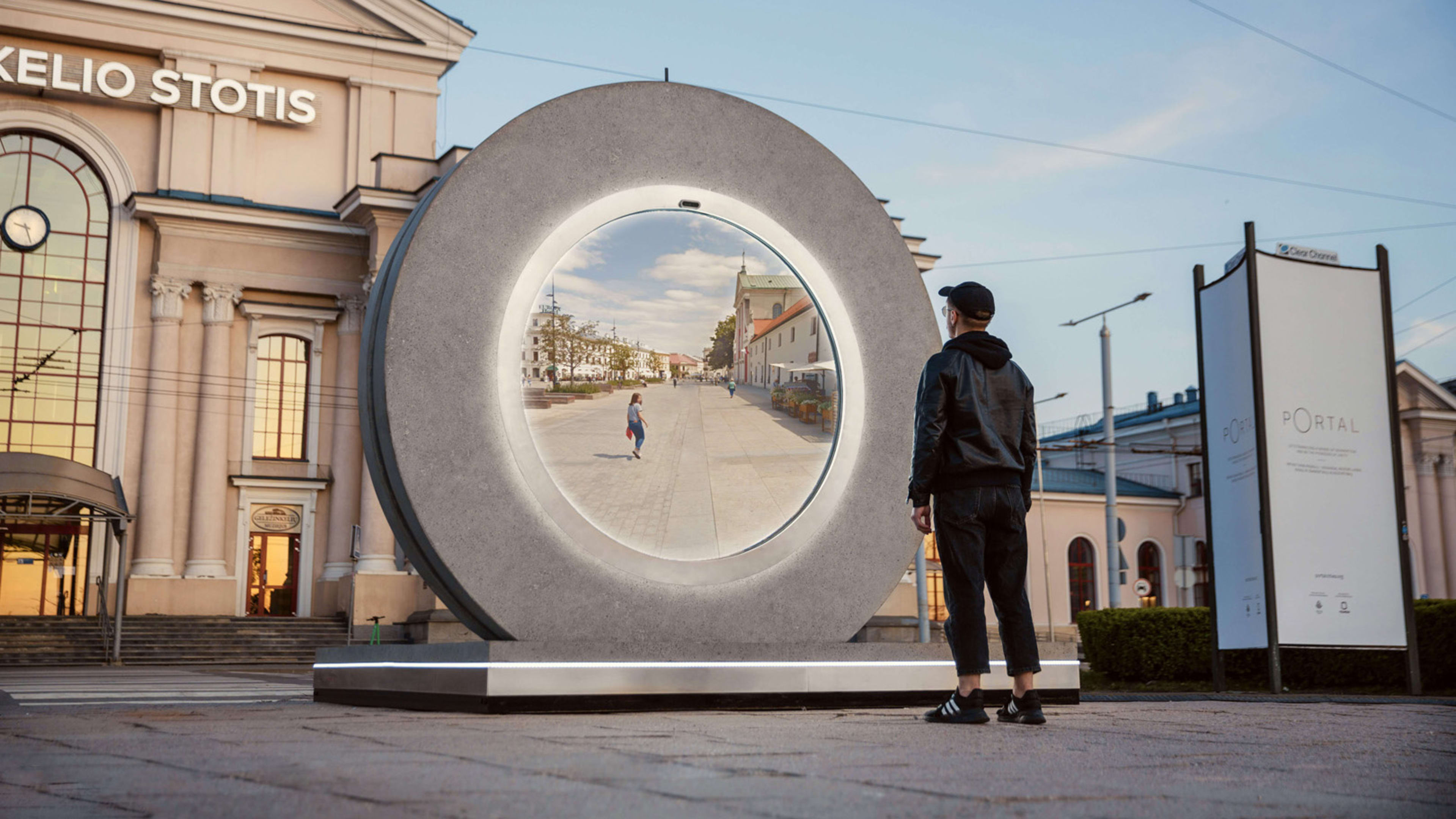The past 18 months have been isolating. Many of us haven’t seen friends or family. We haven’t traveled. And now, even as much of the United States is opening back up, visiting certain foreign countries is still not an option.
But what if you could visit somewhere without flying? What if you could meet someone face-to-face, without ever leaving your home town?
That’s the idea behind Portal. It’s a sci-fi inspired sculpture developed by the Benediktas Gylys Foundation, a social innovation group, and Gediminas Technical University. As you approach the concrete and steel ring, you can see that it is actually a window to another place. The first Portals are set up connecting the Lithuanian capital Vilnius and the Polish city Lublin. As people look through the portal in Lublin, people in Vilnius are looking right back.
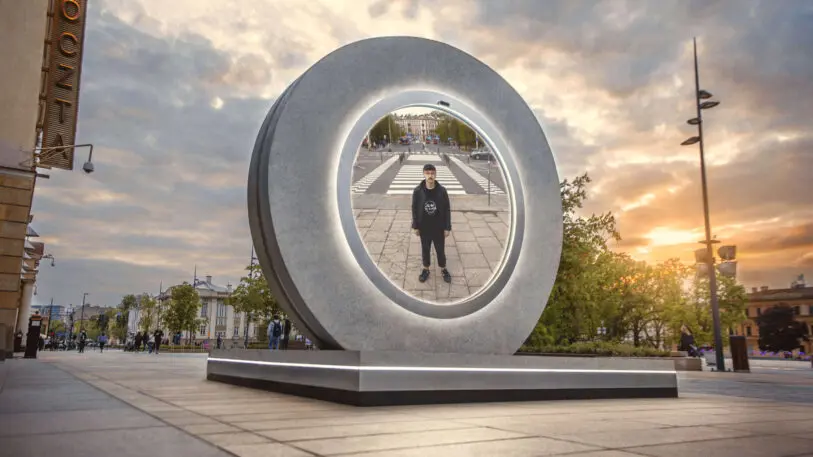
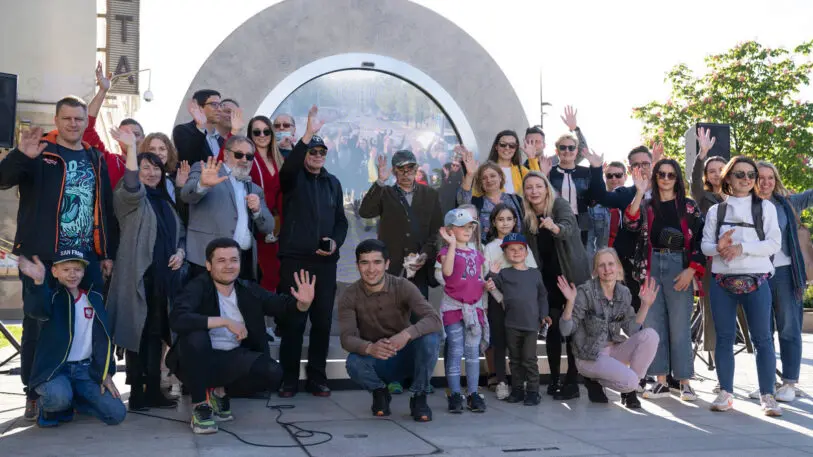
“If we rose only 30 miles to the sky, all these borders and pointing fingers saying, ‘this is our friend,’ ‘they produce good coffee,’ or ‘this is the enemy’ would make zero sense,” writes Gylys. “It’s just a tiny spaceship called Earth and it does not have enough capacity for billions of them, but it sure does have enough capacity for billions of us. We can no longer afford to live on a spaceship in which 99% of it belongs to them. A shift in our perception is a must if we want to continue our trip.”
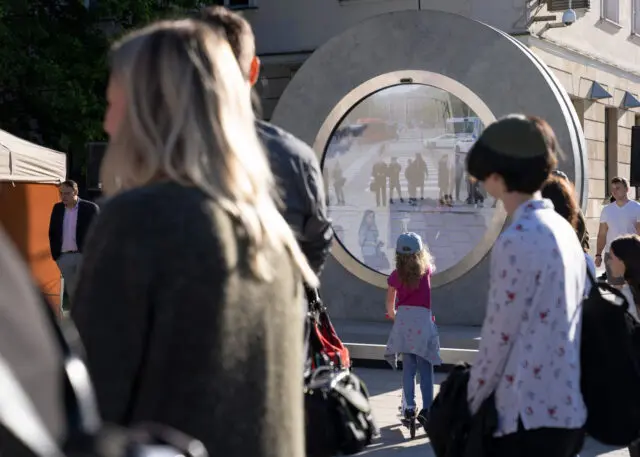
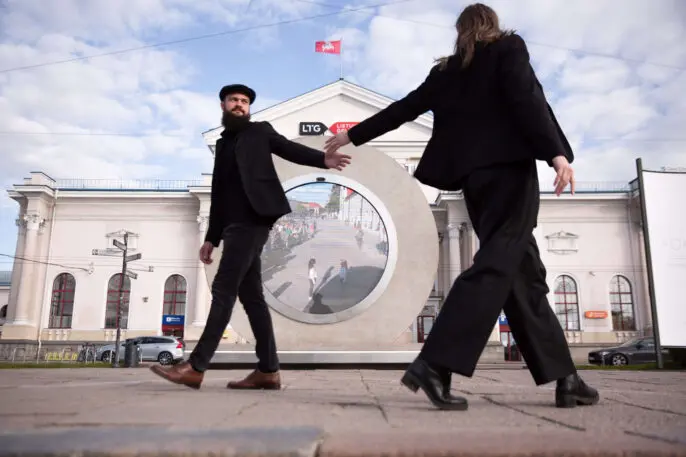
But Portal’s success is about more than even physical presentation. Gylys points out that it is one of the few digital places where you can actually meet new people. Zoom meetings are preplanned, while the friends you follow on Facebook are either real life acquaintances, or suggested by an algorithm.
“Portal invites you to meet people who, according to [social media] algorithms, are too incompatible with your persona,” says Gylys.
It’s easy to be skeptical of Portal’s message. The promise of “seeing both sides” can feel pretty played out in today’s dangerous political climate of false equivalency. My only advice would be, tune out the idea of partisanship and voting for a moment. Imagine a Portal in your own home town, connecting you to a new city across the globe each day. The world would feel a lot bigger, and smaller, because of it.
Gylys is planning to build more Portals in the future, including one in Reykjavik, Iceland, and one in London. And he is inviting anyone who would like to see a Portal in their own city to reach out.
Recognize your brand’s excellence by applying to this year’s Brands That Matter Awards before the early-rate deadline, May 3.
